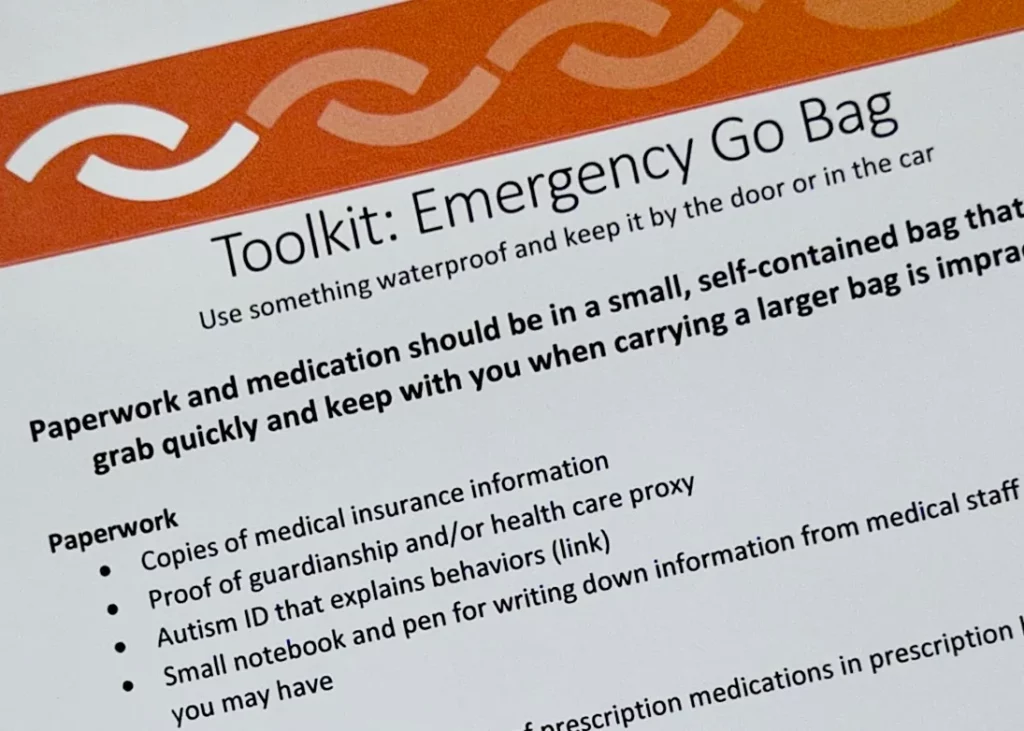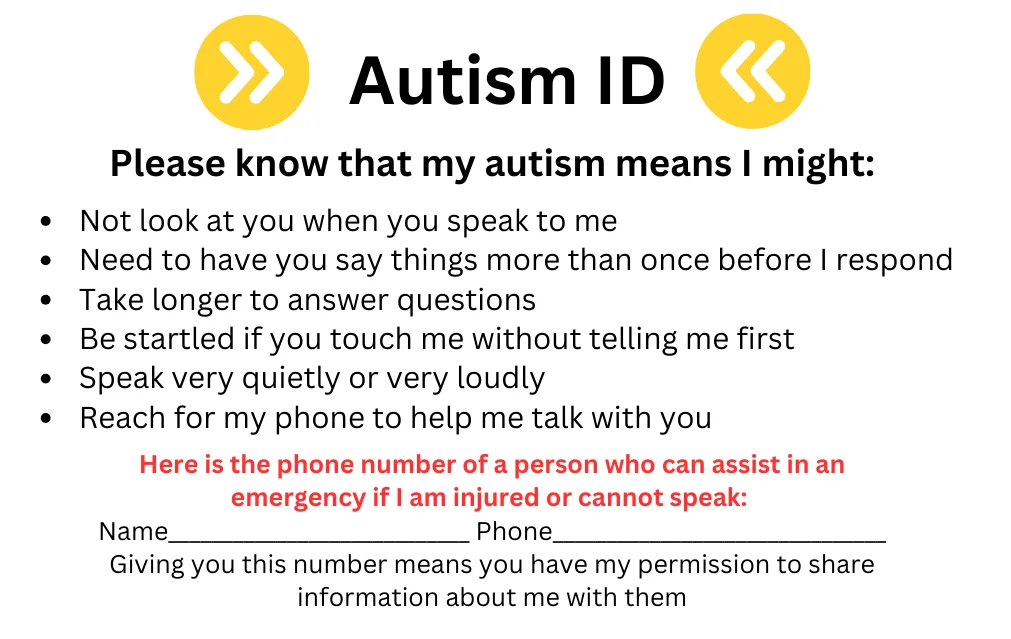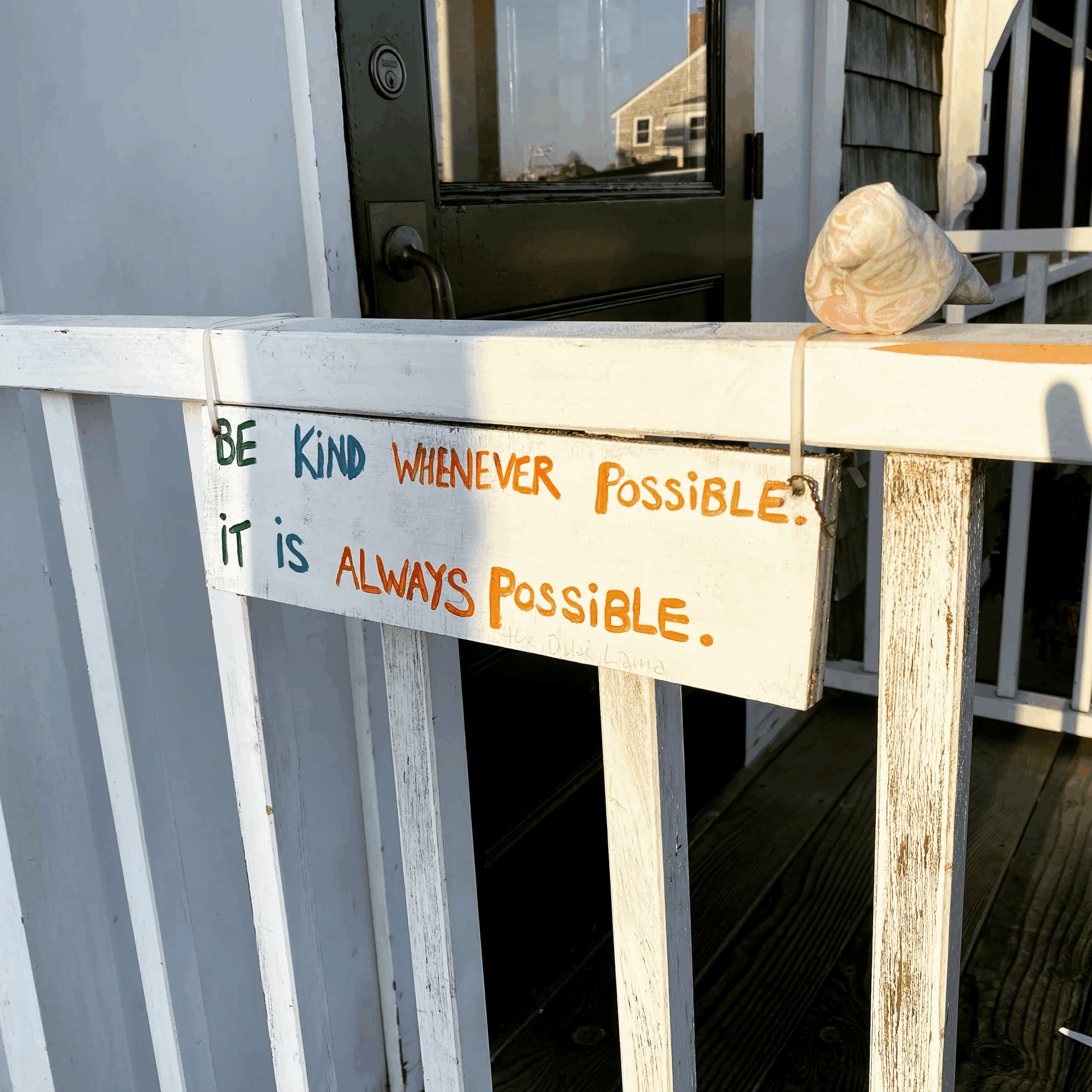Resource Details
Resource Format
Categories
Share:
Be ready: Make a 'Go Bag'
Emergencies are easier to handle if information and supplies are at the ready. Keeping a Go Bag near the door or in the car can help.

DOWNLOAD
The Go Bag – a printable list of things to have on hand to help prepare for emergencies
Start by calling the PCP
Everyone—autistic people and neurotypical people—can benefit from planning for medical or mental health emergencies. If a trip to the emergency department (ED) is necessary, you’ll want to alert your primary care provider’s office (another person in the household can make this call as necessary). It’s especially helpful to request that the PCP call ahead and let the ED or hospital know that an autistic patient is on the way and they can share any pertinent information that can be helpful for your care.
Make a call tree
Another key part of the plan is to create a call tree that includes someone in the circle of support who can contact others who should be alerted to the emergency. This information should be clearly displayed in a prominent position in your home. This is especially important for first responders-police, fire, and EMS – in case you are alone during an emergency. The call tree contacts can include service provider or group home staff, neighbors who can assist with caring for others in the family, and extended family.
Register with the local police
Most local police departmetns have a way of registering citizens with special health needs. If there are details they should know about how autism presents in you or the adult in your family take a moment to communicate about those concerns. For example, some people panic and hide when they hear sirens, see someone in uniform, or even hear the doorbell.
Calling 911
Most clinicians’ offices direct people in crisis to the local emergency department or urgent care center. If calling 911 is the best or only option, clearly state to the dispatcher that the patient is a person with autism and let them know about any communication or behavioral challenges that might be misunderstood. Many first responders are trained to interact with autistic people but many are not – it’s important to know ahead if time if local police, fire, and EMS are trained in working with the autistic community. Autism Speaks has a guide for first responders that can be shared with local public safety organizations, including information for dispatchers. In addition, there are several programs that train first responders to safely interact with autistic people, including Autism Alert and Autism Risk and Safety Management.
Tips for interacting with first responders
Whether an emergency occurs in the home or out in the community, an autism ID can be useful. It can be a simple card with details that are specific to the individual and can help avoid misunderstandings in stressful situations. Caregivers can share an ID card or self-advocates can carry them and share as necessary.
The card be shared with first responders or with staff and clinicians in emergency departments, urgent care, and hospitals. There are Medicalert IDs for autism and also sites that can create an autism ID for a fee. This one was created using a free site called Canva:

Mental health emergencies
When there’s a mental health emergency, think carefully about what the goal is for taking someone to the Emergency Department. Dr. Robyn Thom, a psychiatrist at the MGH Lurie Center for Autism, discusses expectations for a mental health care visit to the Emergency Department:

Dr. Robyn Thom on things to consider when going to the emergency room for a mental health emergency.
DOWNLOAD
A 3×5 identification card to print and use for communicating in an emergency

More Resources
See our resource topics for more information on supporting adults with autism throughout the lifespan.



Caregiver Guidance



